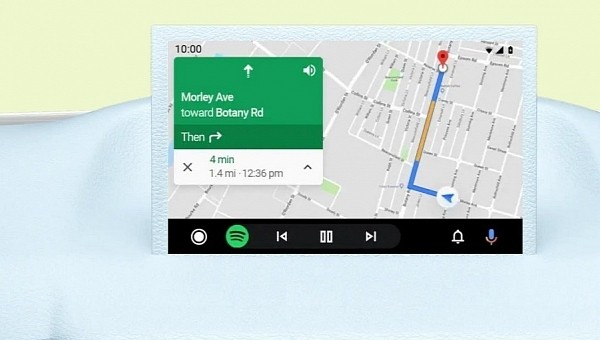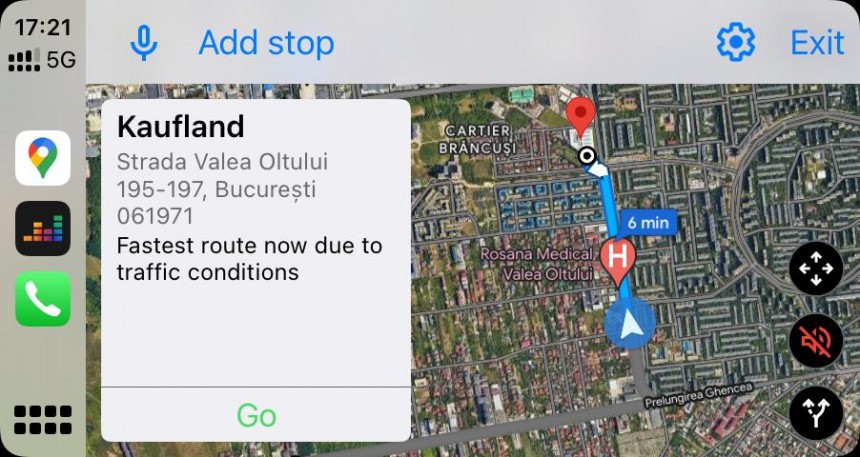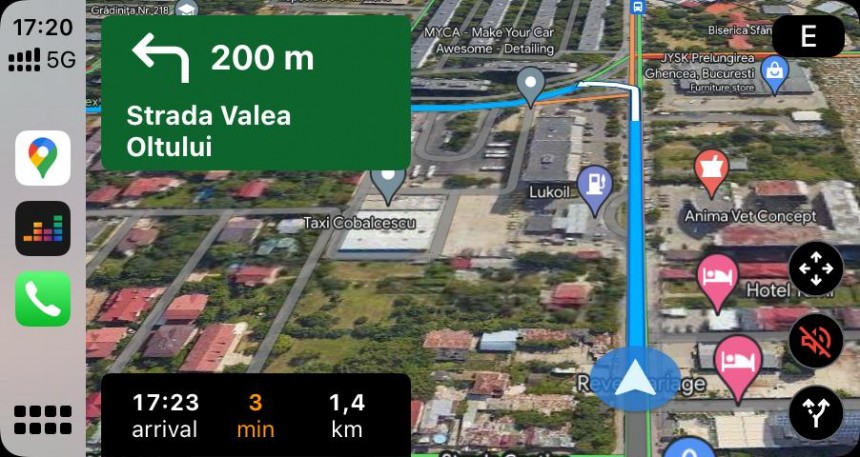Google Maps was, is, and will continue to be one of the most popular navigation apps out there, but on the other hand, it’s not the leading platform when it comes to the overall mapping package.
HERE is the company that rules the mapping world at this point, with Google obviously following in its footsteps and trying to expand Google Maps on absolutely all possible fronts.
While the search giant is working around the clock on bringing Google Maps to more cars out there, mostly as part of the Android Automotive push, only sky seems to be the limit for the service. Despite some questionable decisions taken by Google, that is, as recent research forecasts a mix of massive growth and market challenges for Google Maps in the coming years.
It all starts with the demise of Google Assistant Driving Mode. Launched as an alternative to Android Auto for phones, the application that everybody truly loved, Google Assistant Driving Mode was eventually dropped last year for a reason that more or less made sense.
The driving mode is now part of the Google Maps experience, and this, research firm Omdia says, makes perfect sense from a long-term growth perspective for the platform. Because everything is now built around Google Maps, users are more likely to stick with the app, especially because no other navigation app is supported in the new driving mode.
But on the other hand, Omdia warns that the demise of Google Assistant Driving Mode and betting all-in on Google Maps could actually backfire for the search giant.
This is because the competition in this market is getting fiercer, so at some level, we should all expect Google’s rival to try to capitalize on this decision and lure users into their own ecosystems. There are plenty of mobile navigation apps out there, and the most popular names include HERE Maps, Sygic GPS Navigation, and Apple Maps.
Needless to say, not everybody is a big fan of Google Maps, so eventually, Google shouldn’t be too surprised if some users end up switching sides. At some level, the company is lucky that Apple Maps, the native iPhone offering, is limited to the Apple ecosystem, as a potential Android version would have provided users with one more incentive to give up on Google Maps.
And while Omdia’s conclusions are solid and well-founded, there’s another thing that could produce a drop in the number of Google Maps users: the general direction of the app.
It’s not a secret that Google Maps has evolved well beyond the standard navigation concept, so right now, it’s a fully featured platform that provides many more capabilities, including business information, street-level imagery, busyness data, and so on.
As a result, users who are particularly interested in the experience behind the wheel could therefore start looking for alternatives, especially because Google’s rivals are investing massively on this front. HERE, for example, is currently the most widely adopted mapping platform in the automotive market, as the company is working with the biggest names in the industry to provide users with pre-loaded maps and related solutions.
Google, on the other hand, is sticking with baby steps for now. Android Automotive is indeed making some progress, but the arrival of Google Maps alternatives on the platform could eventually be bad news in the long term if the company doesn’t provide drivers with a solid reason to stay on board.
The demise of Android Auto for phones, for example, has been a major turning point for users out there. As a mobile app that allowed users to get a taste of Android Auto in a vehicle where the infotainment system did not support such capabilities, Android Auto for phones rapidly became a top choice for millions of drivers.
Despite being launched from the very beginning as a temporary solution until the driving mode was ready, Android Auto for phones ended up becoming exactly what so many users out there expected from their mobile devices when jumping behind the wheel. And at some level, it helped Google gain share in the battle against rival Apple, as the Cupertino-based tech giant did not offer a solution to allow CarPlay to run at the phone level.
Ditching Android Auto for phones only caused more frustration for users, many of which obviously relied on Google Maps for their daily commute. It’s not a secret that the driving mode wasn’t necessarily received very well, so eventually, all these decisions backfired, pushing some users to alternative solutions.
Google Maps has a bright future, as Omdia says, there’s no doubt about it, but Google should clearly focus more on the navigation component of the app. At this point, Waze seems to be getting much more love in this regard, and given the company promises to let the app run independently from Google Maps, it could end up becoming the number one rival cannibalizing its superstar.
While the search giant is working around the clock on bringing Google Maps to more cars out there, mostly as part of the Android Automotive push, only sky seems to be the limit for the service. Despite some questionable decisions taken by Google, that is, as recent research forecasts a mix of massive growth and market challenges for Google Maps in the coming years.
It all starts with the demise of Google Assistant Driving Mode. Launched as an alternative to Android Auto for phones, the application that everybody truly loved, Google Assistant Driving Mode was eventually dropped last year for a reason that more or less made sense.
The driving mode is now part of the Google Maps experience, and this, research firm Omdia says, makes perfect sense from a long-term growth perspective for the platform. Because everything is now built around Google Maps, users are more likely to stick with the app, especially because no other navigation app is supported in the new driving mode.
But on the other hand, Omdia warns that the demise of Google Assistant Driving Mode and betting all-in on Google Maps could actually backfire for the search giant.
This is because the competition in this market is getting fiercer, so at some level, we should all expect Google’s rival to try to capitalize on this decision and lure users into their own ecosystems. There are plenty of mobile navigation apps out there, and the most popular names include HERE Maps, Sygic GPS Navigation, and Apple Maps.
And while Omdia’s conclusions are solid and well-founded, there’s another thing that could produce a drop in the number of Google Maps users: the general direction of the app.
It’s not a secret that Google Maps has evolved well beyond the standard navigation concept, so right now, it’s a fully featured platform that provides many more capabilities, including business information, street-level imagery, busyness data, and so on.
As a result, users who are particularly interested in the experience behind the wheel could therefore start looking for alternatives, especially because Google’s rivals are investing massively on this front. HERE, for example, is currently the most widely adopted mapping platform in the automotive market, as the company is working with the biggest names in the industry to provide users with pre-loaded maps and related solutions.
Google, on the other hand, is sticking with baby steps for now. Android Automotive is indeed making some progress, but the arrival of Google Maps alternatives on the platform could eventually be bad news in the long term if the company doesn’t provide drivers with a solid reason to stay on board.
The demise of Android Auto for phones, for example, has been a major turning point for users out there. As a mobile app that allowed users to get a taste of Android Auto in a vehicle where the infotainment system did not support such capabilities, Android Auto for phones rapidly became a top choice for millions of drivers.
Ditching Android Auto for phones only caused more frustration for users, many of which obviously relied on Google Maps for their daily commute. It’s not a secret that the driving mode wasn’t necessarily received very well, so eventually, all these decisions backfired, pushing some users to alternative solutions.
Google Maps has a bright future, as Omdia says, there’s no doubt about it, but Google should clearly focus more on the navigation component of the app. At this point, Waze seems to be getting much more love in this regard, and given the company promises to let the app run independently from Google Maps, it could end up becoming the number one rival cannibalizing its superstar.









